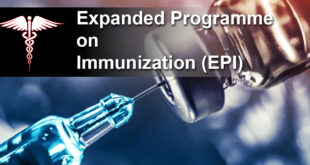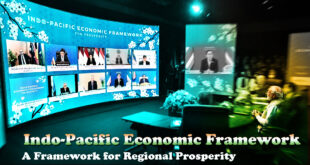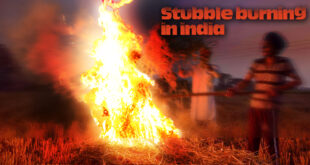Context: The ‘State of Food Security and Nutrition in the World’ by FAO: 2021 India approx. 74% or 1 billion of the population cannot afford a healthy diet.
Food security is when all people at all times have physical and economic access to sufficient, safe and nutritious food to meet their dietary needs and food preferences for an active and healthy life. India is the fastest growing large economy of the world, but it is also facing accelerating food-price inflation.
ISSUES
| SUPPLY SIDE ISSUES Low agricultural productivity Deteriorating soil health Heavy dependence on monsoon irrigation The ongoing fragmentation of already small land holdings lowers the capacity for productivity-enhancing capital investment |
CONSUMPTION SIDE ISSUES Lack of efficient management framework Public Distribution System faces challenges like leakages and diversion of food-grains, inclusion/exclusion errors, fake and bogus ration cards, and weak grievance redressal and social audit mechanism. |
| Lack of proper implementation of government policy States rely more on food allocation through PDS central pool rather than enhance agricultural productivity increased public expenditure on irrigation is not reflected in an increase in irrigated area |
Lack of purchasing power An implication of continuing high food-price inflation is that a section of the population could be facing hardship in consuming food of adequate nutritional value. |
SCHEMES
1. Public Distribution System
policy for management of the food economy in the country.
Supplemental in nature
commodities namely wheat, rice, sugar and kerosene are being allocated to the States/UTs for distribution.
2. National Food Security Act, 2013
Shift in food security from welfare to rights based approach.
covers 75% of the rural population and 50% of the urban population through
a. Antyodaya Anna Yojana: It constitute the poorest of-the-poor, are entitled to receive 35 kg of foodgrains per household per month.
b. Priority Households (PHH): Households covered under PHH category are entitled to receive 5 kg of foodgrains per person per month.
SOLUTIONS
SUPPLY SIDE
1. Use the experience from Green Revolution
Pro: high-yielding seeds, cheap credit, and assured prices through procurement
Con: rampant use of chemical fertilizer, fuelled by subsidy, which degraded the soil, reliance on procurement prices rather than productivity increase, exclusively focused on cereals rather than pulses (source of protein for most Indians)
2. A second agricultural revolution is needed now
Objective: contain the rising price of food, yield increasing interventions on the farm, extend irrigation to 100% of the net sown area, an end to restrictions on leasing of land, a quickening of agricultural research and the re-institution of extension.
CONSUMPTION SIDE
1. Improving purchasing power through employment generating schemes
Poverty alleviation programmes like the Integrated Rural Development Programme (IRDP) and employment generation schemes like Jawahar Rozgar Yojana, Nehru Rozgar Yojana etc need to be re-oriented and up scaled to make a positive impact on the purchasing power of the lower socio-economic segment of the population.
2. Community participation and intersectoral coordination
Delivering very basic, well-targeted package of nutrition services through a multi-sectorial approach will improve the nutrition level of people. Community based nutrition programs (CBNP) which create scope for community participation, must be facilitated by effective policy implementation. Ensure better usage of technology for dissemination of information, direct benefit transfer and ensuring transparency.
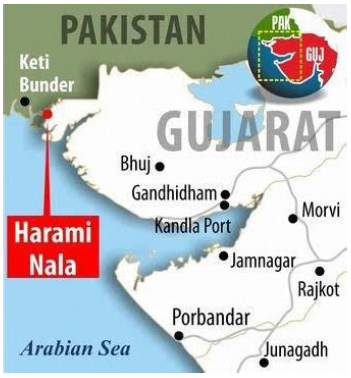 Sir Creek area
Sir Creek area
• Sir Creek is a 96-kilometer (60- mile) tidal estuary in the uninhabited marshlands of the Indus River Delta
on the border between India and Pakistan.
• Exactly located in Harami Nala
• The creek flows into the Arabian Sea and separates Gujarat state in India from Sindh province in Pakistan.
 Border Dispute:
Border Dispute:
• Red line is claimed by India and Green line is claimed by Pakisthan
• The dispute has been a source of tension between India and Pakistan for many years.
• In 1965, the two countries fought a war over the Rann of Kutch, which is the area surrounding Sir Creek.
• The war ended with a ceasefire, but the dispute over Sir Creek remains unresolved.
• Green line and Red line represent the border dispute in that area between India and Pakisthan
Here are some of the reasons why the Sir Creek dispute is so difficult to resolve:
- The area is uninhabited and marshy, making it difficult to patrol and demarcate the border.
- Both India and Pakistan have strong military presences in the area.
- The dispute is a matter of national pride for both countries.
- There is a lack of trust between India and Pakistan.
Other NEWS
| Foundation stone for Nyoma airfield near the LAC in eastern Ladakh |
|
| Nipah breaks out |
|
No motorised boats in wetlands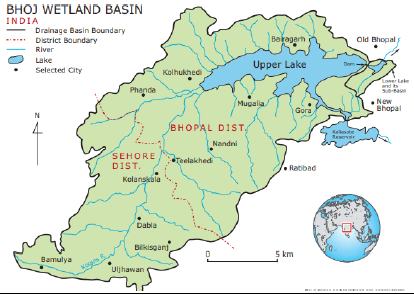 |
The National Green Tribunal (NGT) on Tuesday pulled up the Madhya Pradesh government over the “very drastic” damage to water bodies and ordered it to stop the operation of cruise vessels as well as other motor-propelled boats in the Bhoj wetland. |
 Chinmaya IAS Academy – Current Affairs Chinmaya IAS Academy – Current Affairs
Chinmaya IAS Academy – Current Affairs Chinmaya IAS Academy – Current Affairs
